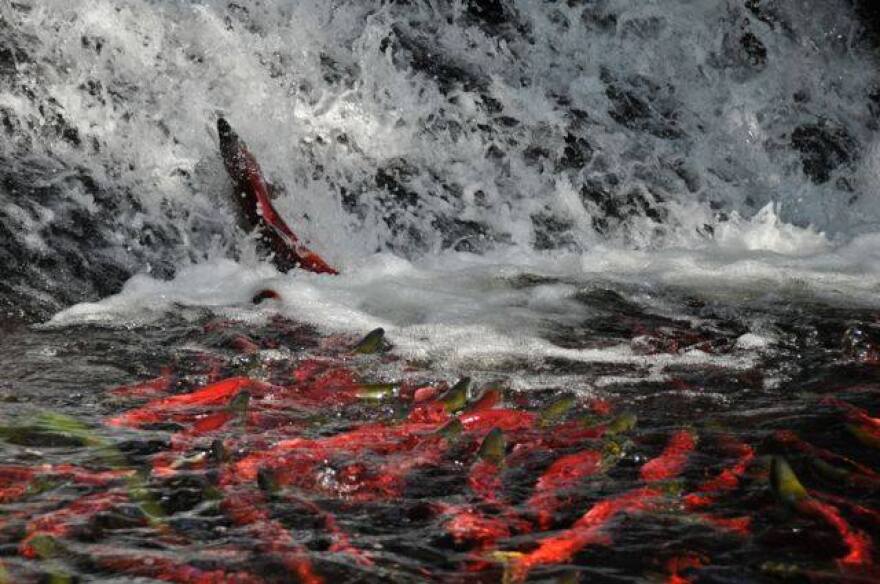FRI estimating more 2.2 age class fish to Egegik River than Fish and Game, accounting for most of the difference between two separate forecasts.
The University of Washington’s Alaska Salmon Program released its forecast for next year’s Bristol Bay sockeye return. The 50.9 million fish prediction is slightly larger than the Department of Fish and Game’s, and is the second biggest by FRI. KDLG’s Dave Bendinger has more:
Audio transcript below:
There’s about a four million fish difference between the state of Alaska and the University of Washington’s forecast for next year’s run, with FRI predicting the larger of the two.
“The main differences in 2016’s forecast between the state and the University of Washington, most of it is wrapped up in Egegik," said Chris Boatright, an FRI research scientist, who along with Curry Cunningham put the University of Washington forecast together.
Why the differences in Egegik? It has to do with the return next year of 2.2 age class fish.
“For Egegik two-twos, if you just use a straight linear model, based on 2015’s two-ones returns, then you get a very large number of two-twos. So you then have to decide where you want to be with that number, and go back and look at just the historical bounds for Egegik two-twos,” said Boatright.
Boatright says at that point, researchers have to decide how far out those historical bounds for Egegik 2.2's they’re willing to go. That judgment is where the variability lies between the two separate estimates.
“I think ADF&G was a bit more conservative in that age class for that stock than we were," he said. "That’s not to say that their number is low, it’s just to say that their number is a bit smaller.”
How accurate is FRI’s forecast versus the actual returns? Boatright says it’s plus or minus 11 to 12 percent on average, and that’s taking into account 2014 when both the UW and Fish and Game forecasts were way under the actual return, by 50 percent or more. Seeing as how it’s a long way till next year’s return is tallied, by say August, we wondered if FRI and Fish and Game’s Chuck Brazil might put some friendly bets on the table to see whose work stands up best.
“There are wagers, but I do not wager with Chuck regarding the preseason forecast," Boatright said with a laugh.
Both Fish and Game and FRI work off the same historical data set, and both make use of sibling regression models. Both also spend quite a bit of time working on their forecasts.
“By the time the data are put into the models, the models are run, all the data is quality controlled, and reviewed, and then actual forecast numbers are chosen, I would say it’s about a month long process.”
If 2016 shows up in the 50 million sockeye range, it’ll be on the heels of two other big years: the 58.8 million run of 2015, and the 41.1 million return in 2014 that caught all of the biologists, not to mention the industry, off guard. All three are above the 20 year average. It might get easy to start thinking that these big runs are just par for the course anymore in Bristol Bay. Boatright says … not so fast. Just look at the system’s variability over the past three years.
“You know, 2013 we had what could be considered a smaller run, and it was the earliest run on record. Then two years later, 2015, we had one of the larger runs on record, and it was the latest run on record, so … Bristol Bay is a highly variable place.”
A quick look at the FRI numbers by district: The 50.9 million total run prediction breaks down to 23.5 million to Naknek Kvichak, 10.5 million to Egegik, 4.8 million to Ugashik, 11.5 million to the Nushagak, and 690,000 sockeye back to Togiak.
FRI also estimates an inshore harvest next year of 34.1 million sockeye, or about 190.1 million pounds.
Reach the author at dave@kdlg.org or by calling 907-842-5281.


